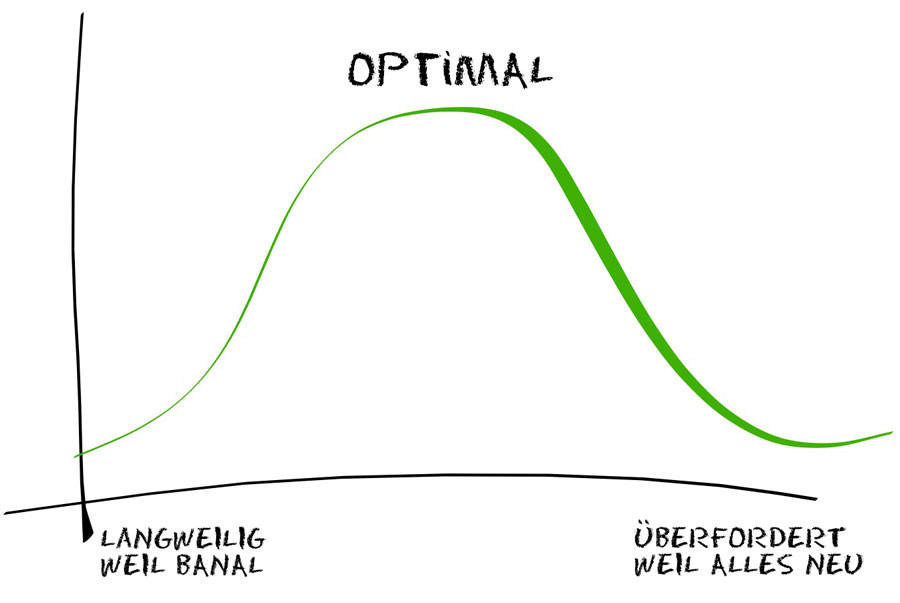
Graph between incomprehension, optimal and boredom (Graph: A. Pratzner)
Why do people like photos and why is the same photo displeasing for others
or: information theory and photography
Often I ask myself, why does a photo please some people, while others are displeased by it. Here information theory offers answers for photography. What seems highly scientific and complex is really simple in reality.
An explanation: in information theory, the term of communication is characterized by the Shannon-Weaver model. Information (which is collected when taking the picture) are transmitted over a channel (seeing) towards a recipient (the observer of the photo).
Here some "problems" can occur. Solely the channel can be a problem, many photographers forget that. If the recipient suffers from a dyschromatopsia he may receive a color picture completely different.
If our recipient has normal-seeing eyesight, then it depends on the observer's understanding of the photo and its background. The depicted image can be completely strange for the observer or he might have seen it a thousand times. Completely strange is "original" while seen a thousand times is "banal".
Now we can see the whole visuel (somehow photographers are all strongly coined visuel) and depict it as a curve, which displays the information value of a message (content of the photo).
The information value has 2 sides:
- If something is banal (completely know), it is uninteresting (boring).
- If something is completely unknown (an original) than it can face a complete lack of understanding and may also be coined as uninteresting.

Graph between incomprehension, optimal and boredom
Pessimistic deduction:
We as photographers can NEVER EVER please everybody. What is interesting for some is too complicate for other or bores those. After information theory the quality perception is dependent on level of knowledge and cultural area of the observer.
Helpful deduction for photographers:
If a photo shows something but does not establish any reference it is difficult for the unconcerned observer to rate the photo. For example: on a photo, you can see the world biggest glacier. But the size comparison is not directly visible. The small black points below in the middle are busses, which are tourists visiting the glacier. Without this knowledge, the picture could show a snowdrift photographed with the macro mode. That means, any reference point is missing for the observer.
Try looking at your photos with the eyes of a bystander! If somebody hasn/'t been at the place where the photo was taken, what can he grasp out of the photo? What does he see? Does the photo tell a bystander a story?